Christmas remains the most important holiday in Estonia. For Estonians, it is a layered celebration, blending the traditional with the modern, and the secular with the religious.
As in much of the Nordic world, the focal point of the festivities is Christmas Eve. The season itself, however, begins earlier: from the first Sunday of Advent, homes are marked by Advent candles and children open their Advent calendars in anticipation of the holidays to come.
Folk traditions
In Estonian, Christmas is known by the pre-Christian word jõulud. In folk tradition, the holiday carries a dual meaning: it commemorates the birth of Christ, while also encompassing the broader midwinter period. The sacred and the spiritual exist alongside older elements of magic and mysticism.
According to the traditional folk calendar, Christmas time began on St Thomas’s Day, 21 December, and lasted until Epiphany on 6 January. In coastal areas and on the islands, the festivities extended by an additional day, ending on St Canute’s Day, 7 January. The central moment of the season was Christmas Eve, celebrated on 24 December.
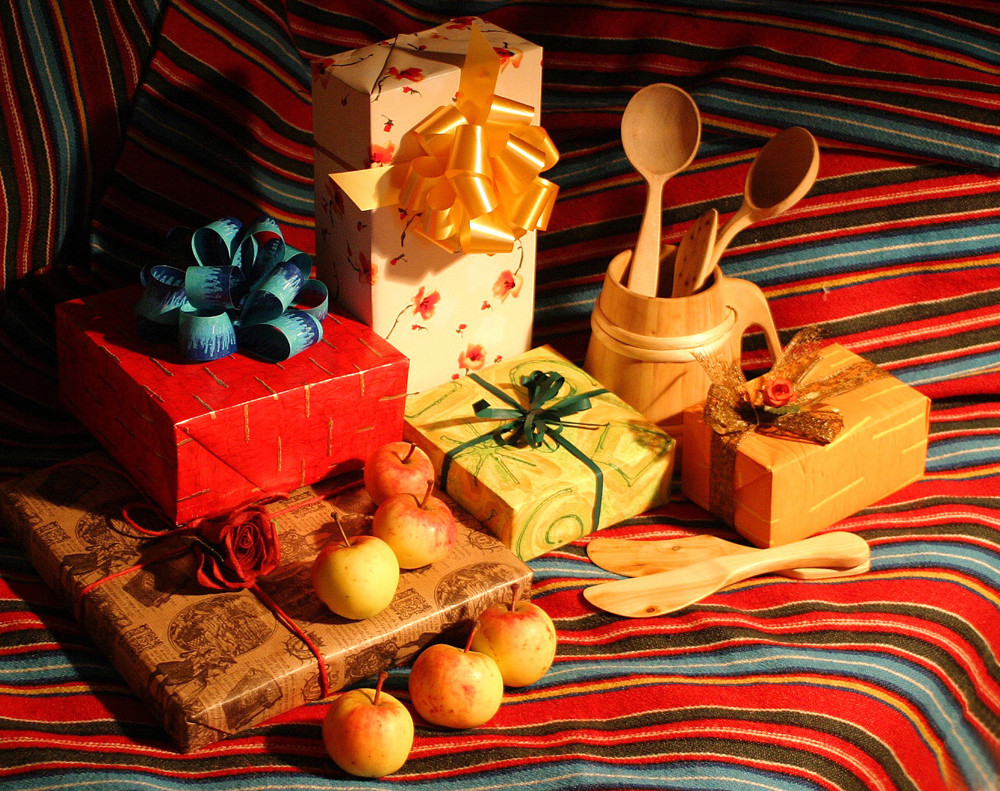
The Estonian word jõulud is of ancient Scandinavian origin, derived directly from jul, and has no intrinsic connection to Christianity. Scandinavia and Estonia together form the only region in modern Europe where the birth of Jesus Christ is still marked by this pre-Christian term – jul or jõulud.
Despite this shared tradition, regional variations exist. In parts of southern Estonia, Christmas is also referred to as talvistepüha (“winter holiday”), a usage widely regarded as a direct influence from neighbouring Latvia, where Christmas is known as Ziemas svētki (“winter festival”).
For millennia, communities have marked the winter and summer solstices – celebrations reflected in Estonian folk tradition as Christmas and Midsummer Night (23–24 June). Another term associated with the winter season, näärid, is of German origin. During the atheistic Soviet period, it was the only officially sanctioned seasonal holiday. In practice, jõulud and näärid came to denote much the same thing: the festive turning point of the year.
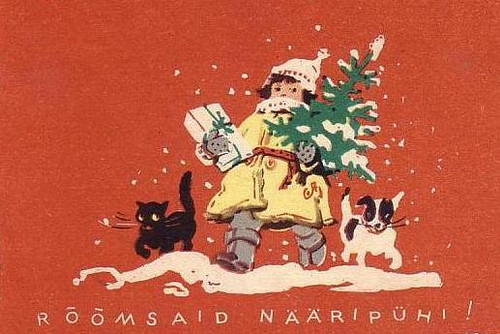
In folk belief, jõulud marks the winter solstice, the point at which the day is shortest and the night longest, celebrated from 21 to 25 December. Tradition held that “the sun lay in its nest”, and the day was observed as the Sun’s birthday. From then on, the Sun was believed to begin its slow ascent, rising higher and moving northward once more.
Christmas also marked the culmination of the late autumn ritual cycle, which began with the harvest feasts and continued through All Souls’ Day, St Martin’s Day and St Catherine’s Day.
By comparison with these ancient, local pagan traditions, the association with the birth of Jesus Christ is relatively recent, gaining wider prominence only in the last few centuries. Even so, traditional Estonian Christmas observances – particularly on Christmas Eve – remained closely tied to the rhythms, customs and essential needs of the rural peasantry.

The Christmas season, with its prescribed duties and prohibitions on certain kinds of work, began on St Thomas’s Day, regarded as the first day of the winter solstice, following a preparatory period of three to four weeks.
Winter afforded the peasantry the rare luxury of time, allowing for extended celebration. Pigs were slaughtered and ale brewed in advance of St Thomas’s Day. Certain activities – including milling, spinning, quilling and even horse-driving – were forbidden, as their noise was thought to disturb the “good spirits”.
Christmas Eve and Christmas Night were considered the most sacred moments of the season and were closely associated with fortune-telling. The stars and the frost were read as signs, offering clues to the weather and harvest of the year ahead.
Food was left on the table throughout the night, reflecting the cult of the ancestors, while the hearth fire was kept burning – a practice often linked to older forms of sun worship. It was believed that both benevolent and malevolent forces were abroad on Christmas Night, and that ancestral spirits would visit the household. From these signs, predictions were also made about the coming year’s harvest.
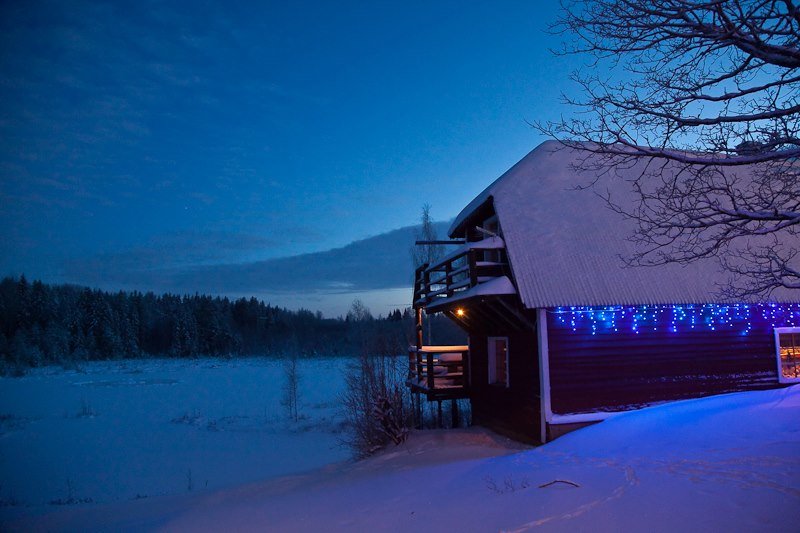
Among Estonian Christmas and New Year traditions, the sauna holds a central and ancient place. Bathing in the sauna on Christmas Eve was customary, undertaken after the house had been prepared for the evening’s celebrations. The ritual was widespread across the country and closely resembled the sauna traditions observed on Midsummer’s Eve.
Traditionally, the sauna was visited before attending the Christmas Eve service at the local village church. For children, the evening brought its first small thrill: new festive clothes and shoes, worn for the church service and the celebrations that followed.
Christmas symbols
In Estonia, Santa Claus customarily brings gifts on the night of 24 December.
One of the most significant and widespread traditions of the Estonian peasantry – shared with other parts of Northern and Central Europe – was the practice of bringing Christmas straw into the home. Although often linked to the biblical story of Christ’s birth, the custom may well have pre-Christian origins. In Estonia, straw – and in parts of southern Estonia, hay – was spread indoors for the duration of the festive season, becoming both a symbolic element of the holiday and a source of play for children.
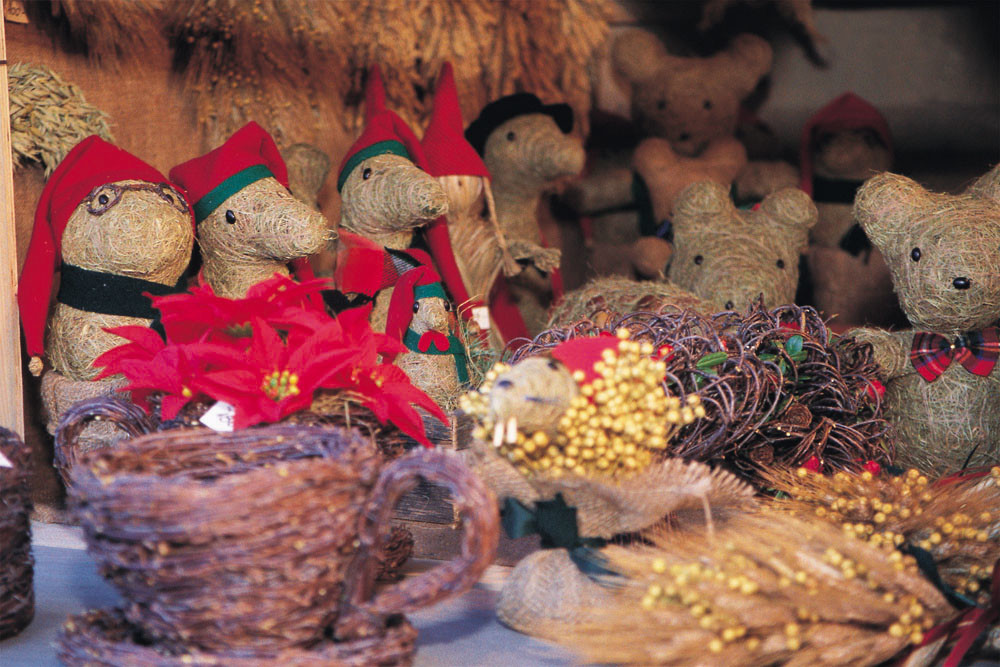
Alongside the custom of bringing straw into the home, Estonians and their neighbours also practised the making of special Christmas crowns, designed to resemble church chandeliers. The tradition is thought to have reached Estonia from western and southern Finland and initially took root among the local Swedish-speaking population. It was particularly strong on the island of Vormsi, whose inhabitants maintained close ties with relatives in Sweden and Finland.
By the turn of the 20th century, both the Christmas crown and the indoor straw tradition had largely fallen out of use, replaced by newer festive symbols. Interest in the older customs revived in the 1970s, when making Christmas crowns once again became a popular part of seasonal celebrations.

By comparison with other Estonian Christmas symbols, the Christmas tree is a relatively recent addition, arriving from Germanic culture in the mid-19th century.
In towns, Estonians adopted the custom from the local German-speaking population. From there, it spread to the countryside through the Baltic German aristocracy, who hosted Christmas celebrations in their manor houses, complete with decorated trees and gifts for servants and their children.
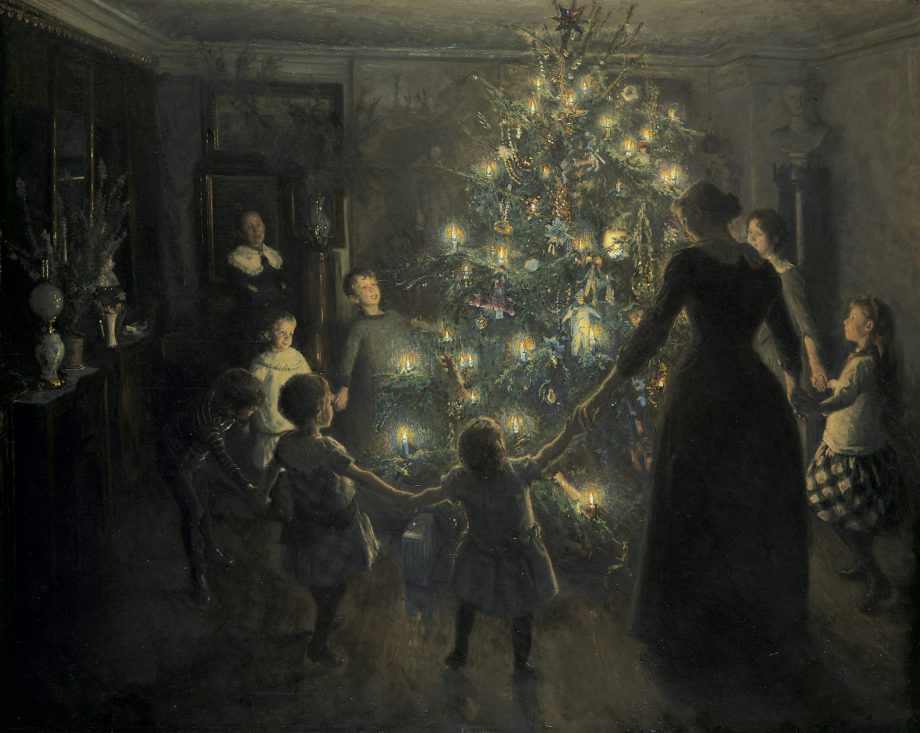
The custom of displaying Christmas trees soon spread to schools, churches and farmhouses, often alongside the older tradition of bringing straw indoors. The tree was invariably an evergreen fir, though in a few treeless regions – such as the island of Kihnu – pine was sometimes used instead.
Decoration was modest. Trees were adorned with small handmade toys and sweets, and, later, with candles lit for the festive evening.
The tradition of Santa Claus bringing Christmas presents is likewise relatively recent, but it has since become firmly established.
Christmas food
Traditional Estonian Christmas fare centres on pork, sauerkraut and blood sausage. Substantial meals were eaten on both Christmas Eve and Christmas Night, and abundance at the table was believed to ensure sufficient food for the year ahead.
According to older custom, between seven and twelve different dishes were served on Christmas Night. A special festive loaf, known as Christmas barrow, was baked for the occasion. On the holy night, even the household animals were included in the ritual: Christmas bread was taken to the barn and offered to the livestock, reinforcing the belief that prosperity depended on harmony between people, nature and the unseen world.
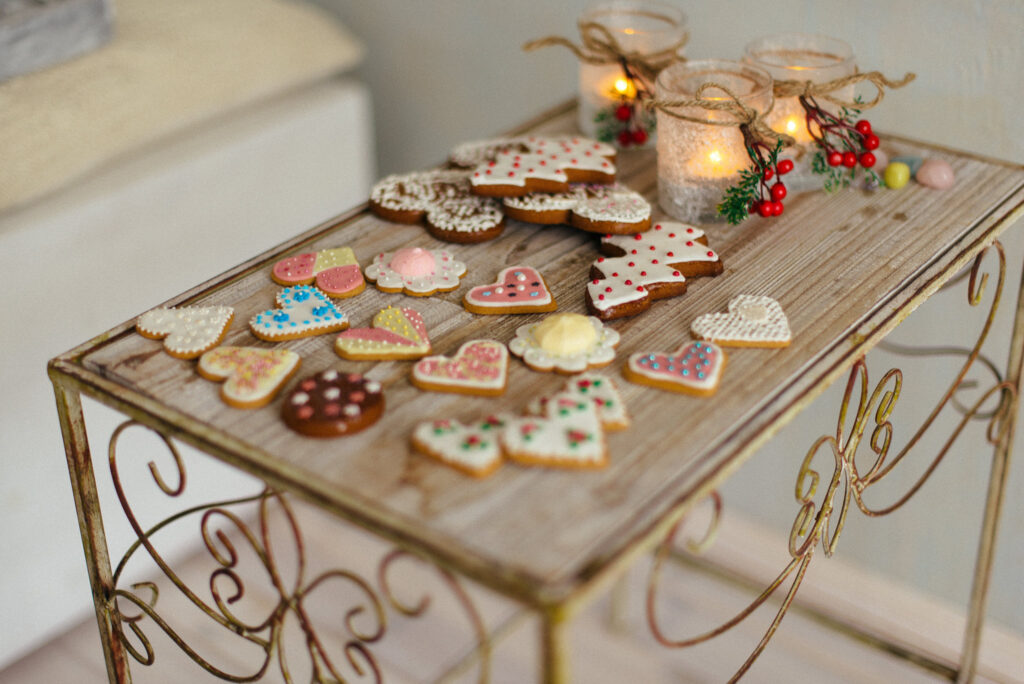
Home-brewed ale and mead were the most popular Christmas drinks. Festive menus varied by region, reflecting the differences between inland farming communities and the fishing settlements along the coast.
Christmas Eve and Christmas Day were traditionally observed as domestic holidays, spent within the household. From 26 December onwards, visiting began: relatives, friends and neighbours were called upon, and on the night of 27 December, Christmas was formally “sent off”. The local tavern was a common destination, and the day was associated with sociability and merriment.
The final days of the year leading up to New Year’s Eve were known as “half-holidays”, a period during which strenuous work was still avoided. Social visits continued, and leisure took precedence over labour.
Recent years
During the Soviet occupation, Christmas was banned as an official holiday. The traditional Christmas season was reduced to New Year’s Eve and New Year’s Day celebrations.
Despite these restrictions, Christmas endured as an unofficial observance. Large numbers of Estonians continued to attend Christmas Eve church services, quietly maintaining traditions that had been passed down for generations.
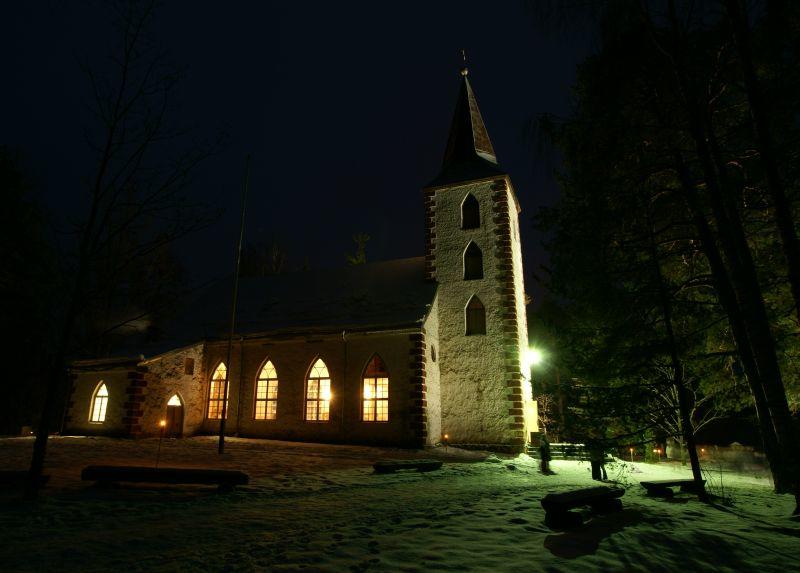
Attendance at Christmas Eve services was often followed by the lighting of candles on the graves of relatives. Over time, this quiet ritual became a peaceful, nationwide expression of resistance to Soviet ideology and its promotion of atheism. Christmas Day itself, an ordinary working day under Soviet rule, was observed privately at home with family and close friends.
With the political changes of the late 1980s, Christmas – along with the Christmas tree and Santa Claus – gradually returned to public life. After Estonia regained independence, the holiday was formally restored to the calendar.
Alongside ancient Estonian traditions, newer influences – largely Finnish and Scandinavian – have become increasingly visible. Among the most popular is the practice of celebrating “pre-Christmas”, or little Christmas, during the early weeks of December. These gatherings, typically held among colleagues in workplaces and institutions, centre on food and drink, most notably mulled wine, and mark the social beginning of the festive season.

Each year on 24 December, the mayor of Tallinn proclaims Christmas Peace from the balcony of the medieval City Hall. The declaration is a tradition dating back some 350 years, originating in the 17th century under the rule of Queen Christina of Sweden.
The custom, which calls for calm, restraint and goodwill during the festive season, has endured through centuries of political change and remains a symbolic opening to Christmas in Estonia.
This article was originally published on 24 December 2013 and lightly edited on 23 December 2025.

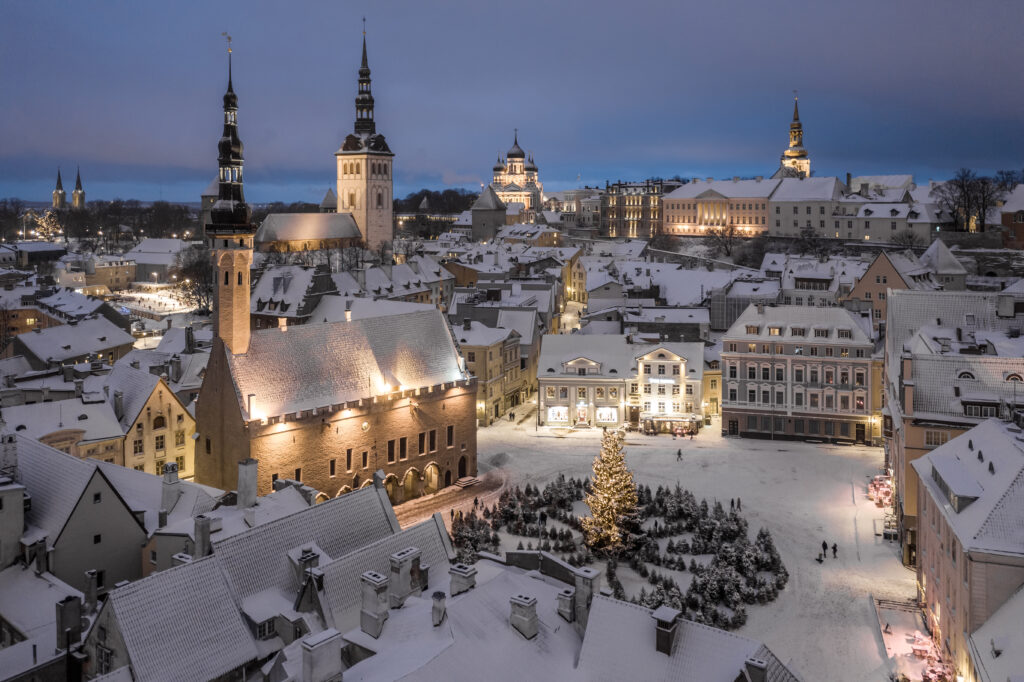
great article for those of us who descend from an Estonian
There is an equivalent to “veivorst” in English: black pudding. The only difference, as far as I am concerned is, there is less barley in black pudding. Don’t scare foreigners away with “blood sausage”!
And suitable headline from the guardian: https://www.theguardian.com/world/2016/dec/25/we-got-christmas-back-readers-mark-25-years-since-fall-of-soviet-union?CMP=Share_iOSApp_Other
até arte aérea encontramos lá. Meu Deus do ceu…, “ou Céu como antigamente”. Sutilezas portuguesas…
bjs Estônia, queria ter nascido nesse “paradise”. Quê filme!!
You may consider changing the notation “the Biblical legend of Jesus Christ birth story” as it is one if the most attested historical events to have taken place. Maybe that comment is a hangover from the atheistic Soviet era, itself well known for rewriting history to suit its purposes.
Merry Christmas and Happy New Year Estonian Friends, – from Georgia!
Enjoyable and engaging Christmas article! Am reading this far away, as a Canadian with Estonian ancestry. As an historian, I feel compelled to mention that the first record of a decorated solstice tree was written down in 1441, about an evergreen tree that some local guild merchants and students had decorated in Tallinn’s town square! The Germans who were living in Estonia at the time apparently liked this festive winter custom so much that they took it back to Germany with them, mostly to Bavaria. Many centuries later, Prince Albert of Saxe-Coborg-Gotha, Queen’s Victoria’s husband, introduced this favourite ‘German’ tradition to England (in the mid 1800s) for his children to enjoy. Once the family tree decorating activity became a ‘royal’ English Christmas custom, this celebration was quickly copied throughout the British Empire and then world-wide. The rest is history. Who knew? Merry Christmas! Häid jõulu pühi ja hääd uut aastat! Eva